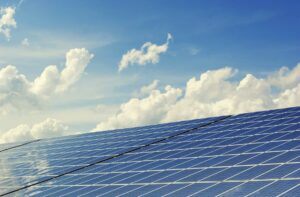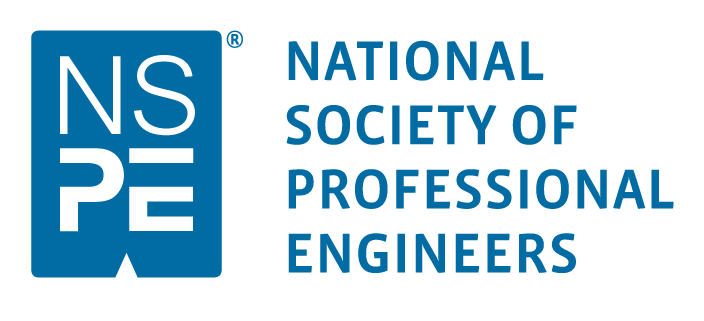Is Your Roof Structurally Ready for Commercial Solar Panels?
Solar power is on the rise across the country. Currently, New Jersey is a leader in solar photovoltaic capacity in the US, with nearly 200,000 individual solar power systems that can generate up to 4.8 gigawatts (GW) of energy. With the benefits of renewable energy sources, it is hardly surprising that solar panel investments are growing in the state.
Solar panels can be installed on commercial or residential roofs. When a property owner or business owner considers installing solar panels, assessing the structural capacity of the building’s roof is extremely important. Mounting solar panels on unstable roofs with undersized framing is a safety hazard that is waiting to occur. Proper evaluation by a NJ structural engineer is critical to determine whether the roof can safely accommodate the additional weight of the solar panels.
Roof Evaluation for Solar Panel Installation
Before installing photovoltaic (PV) or solar power systems, a roof assessment is needed. It involves a comprehensive evaluation of the structural integrity, load-bearing capacity, reserve capacity, and overall suitability of a roof to support the panels.
For example, New Jersey’s weather conditions may present challenges for commercial buildings with solar panels. The region experiences everything from heavy snowfall in winter to severe thunderstorms throughout the year. High winds can dislodge panels and create safety hazards if the solar panel attachments are not designed properly or the roof is not structurally sound. Heavy snowfall can also accumulate on rooftops and place significant stress on a building’s roof and overload the design capacity.
A structural engineer New Jersey can identify roof weaknesses and recommend necessary reinforcements to make a suitable site for solar panels even in various weather conditions. By evaluating the roof’s structural integrity, building owners can avoid potential issues, including:
- Roof cracks, sagging, or collapse
- Difficult access during repair and maintenance
- Shortened roof lifespan
- Increased maintenance costs
- Inefficient energy production
- Compliance issues
- Insurance complications
Solar panel retailers usually offer a roof assessment when purchasing a commercial solar power system. However, it is recommended to consult with a qualified commercial building engineer NJ for this step. While solar panel installers have the necessary skills for the installation process, a structural engineer provides higher expertise and can properly evaluate the roof framing for the load capacity and will determine if there is reserve capacity to accommodate the additional weight of the solar panels.
ASCE 16: Guidance for Roof-Mounted PV Systems
ASCE 16 (ASCE/SEI 7-16) is a standard by the American Society of Civil Engineers that provides design and installation guidelines for roof-mounted PV systems. It provides guidance on:
✔ How to account for the weight of PV panels, mounting systems, and other loads.
✔ Securely attaching PV mounting systems to the roof.
Engineers and architects widely use this standard to establish the structural integrity and safety of building roofs where the PV systems will be installed.
Load Considerations
Load is a primary concern in roof-mounted solar installations. This is because mounting panels on an existing roof structure can significantly increase the load on a building.
A standard commercial 96-cell panel can weigh around 40-55 pounds. When multiple panels are installed, this added weight can significantly stress the roof structure. Other factors also affect the overall load applied on the roof.
The minimum loads that buildings with solar panels are subjected to include the following:
- Dead Load: the weight of permanently attached components like panels and mounting hardware.
- Live Load: the forces generated by the presence and activities of occupants.
- Wind Load: pressure from the wind’s impact on the PV panels and mounting system.
- Snow Load: the weight of accumulated snow on the system.
- Seismic Load: forces due to ground motion during an earthquake.
- Thermal Load: pressure from expansion and contraction of materials due to temperature change.
ASCE 16 provides detailed formulas and guidelines to calculate these different load types. Correct assessment and calculation of these forces help avoid overloading the building’s roof or mounting system.
In a sample case, consider a flat roof where a PV system is to be installed. Each PV panel weighs 40 pounds, and the mounting system adds 22 pounds per panel. If there are 20 panels to be installed, the total dead load added by the PV system would be 1,200 lbs., the sum of the weight of all the panels and the mounting system.
Engineers will convert this weight into load per unit area to assess how evenly the weight of the PV system is distributed. If the structural analysis and load evaluation determine that the roof structure is strong enough to support the anticipated forces, the PV system installation can proceed safely.
Conversely, if it is determined that the roof cannot support the additional PV system loads, an engineer may recommend these solutions:
- Structural reinforcement by adding beams, supports, or other structural elements.
- Alternative mounting solutions, such as using ground-mounted PV systems or lighter-weight PV panels and mounting hardware.
- Redistribution of load across the roof to areas that can better support the weight.
Role of NJ Structural Engineers
As New Jersey continues to lead in solar photovoltaic capacity, structural engineers NJ will play a greater role in making these installations safe, compliant, and durable. Their involvement will include:
Review of Building Documents: Structural engineers will examine the original roof specifications to identify the design loads. They will also inspect the roof framing to determine the size and layout of the framing to compare with the original roof design drawings.
Assessment of Roof Condition: Engineers will evaluate the current condition of roofing materials for signs of wear, degradation, or damage.
Structural Analysis: They will analyze how the loads from the PV system will be distributed across the roof so that the load does not exceed the capacity of the structural framing members.
Identifying Reinforcement Needs: Engineers will determine if additional reinforcements or structural upgrades to the framing are necessary to support the PV system.
Compliance Verification: They will review the solar power installation design for compliance with local building codes and regulations.
By integrating their expertise with the latest technologies and best practices, qualified engineers prevent structural failures that could happen when installing PV systems on unstable or undersized roofs.
Lockatong Engineering – Your Trusted Partner in New Jersey Roof Assessments
Many New Jersey businesses and property owners are transitioning to PV systems to minimize their energy costs and carbon footprint. While it is easy to get overwhelmed by what needs to be done during installation, maintaining structural integrity should be a priority.
Achieve a safe installation of solar power system with Lockatong Engineering. Our experienced structural engineers are proficient in evaluating and reinforcing roof structures to support solar photovoltaic systems. With our skills and expertise, you can move forward with your solar project with the confidence that your building’s integrity and compliance with standards are in capable hands.
Contact Lockatong Engineering today to assess whether your roof is structurally ready for commercial solar panels.








